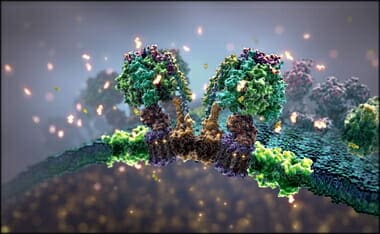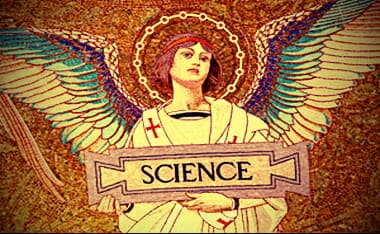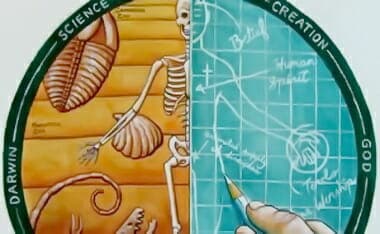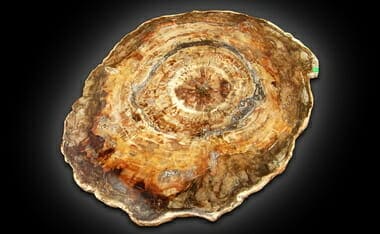This is an extended quote from a MUST HAVE resource, The Genesis Account ~ for the seminarian or creation enthusiast (maybe a graduated-seminary student continuing his or her studies? of which I am). Again, this is not an introduction to the topic of “creation,” but rather a serious in-depth review of history, science, language, culture, theology and the Scriptures. [Two videos added to deepen understanding of molecular machines.]:
DNA: INFORMATION STORAGE, RETRIEVAL, AND TRANSMISSION
Not only do living things constitute enormously complex machines, they also contain the ‘instruction manual’ to build them—a sort of ‘recipe book’ programmed on DNA, the famous ‘double helix’ molecule (deoxyribonucleic acid). The information is stored in four different chemical ‘letters’: A T, C, and G.33 Plants and microbes also use the same DNA coding system.
These ‘letters’, or bases, have remarkable chemical properties. They are flat molecules, which allows them to stack as ‘rungs’ on a spiral staircase. This provides some stability, although see below. The letters of DNA have another vital property due to their structure, which allows information to be transmitted: A pairs only with T, and C only with G, due to the chemical structures of the bases—the pair is like a rung or step on a spiral staircase. This means that the two strands of the double helix can be separated, and new strands can be formed that copy the information exactly. The new strand carries the same information as the old one, but instead of being like a photocopy, it is in a sense like a photographic negative.
The copying is far more precise than random or laboratory chemistry could manage, because there is editing (proof-reading and error-checking) machinery, again encoded in the DNA. This machinery keeps the error rate down to less than one error per l07-108 letters).34, But how would the information for editing machinery be transmitted accurately before the machinery was in place? Lest it be argued that the accuracy could be achieved stepwise through selection, note that a high degree of accuracy is needed to prevent ‘error catastrophe’—the accumulation of ‘noise’ in the form of junk proteins specified by the damaged DNA.
DNA is unstable
DNA is a very complicated molecule, and actually a very unstable one. DNA researchers often need to store it in liquid nitrogen, at about —200°C, and even that frigid temperature doesn’t entirely stop breakdown. A recent paper on DNA stability estimates that, even when preserved in bone, it would be completely disintegrated in 22,000 years at 25°C, 131,000 years at 15°C, 882,000 years at 5°C; and 6.83 million years at —5°C.35 One article reported:
There is a general belief that DNA is ‘rock solid’—extremely stable,” says Brandt Eichman, associate professor of biological sciences at Vanderbilt, who directed the project. “Actually DNA is highly reactive. On a good day about one million bases in the DNA in a human cell are damaged.36
Fortunately, in our cells, we have many elaborate repair machines to undo this chemical damage.37 But most skeptics believe that life evolved in a primordial soup,38 which would have lacked such machines (not to mention the lack of any evidence that it existed at all39). So even if DNA managed to form spontaneously somehow, it would not have survived long.40
Encyclopedic information store
But even more important than the chemistry is the enormous information content of the ‘recipe’ stored on this DNA. This is transmitted from one generation to the next, so that living things reproduce ‘after their kinds’ (cf. Genesis 1). Leading atheist Richard Dawkins himself admits:
[T]here is enough information capacity in a single human cell to store the Encyclopedia Britannica, all 30 volumes of it, three or four times over.41
Nowadays we would say that each of our cells—and there are about a hundred trillion in the human body—contains about three gigabytes of information. Even the simplest living creature, the tiny germ Mycoplasma, has about 600 kilobytes.42 And even this seems incredibly highly compressed. Some bioengineers, led by Stanford University’s Markus Covert, succeeded in modelling this ‘simple’ germ with computers.43 One report on trying to model the processes involved in one cell division for this cell stated:
What’s fascinating is how much horsepower they needed to partially simulate this simple organism. It took a cluster of 128 computers running for 9 to 10 hours to actually generate the data on the 25 categories of molecules that are involved in the cell’s lifecycle processes.44
To return to the Britannica, the information is in the form of ink molecules on paper. But nothing in the ink molecules themselves made them form into the letters, words, phrases, sentences, and paragraphs of the Encyclopedia. It certainly wasn’t produced by an ink spill. Rather, the information was imposed on the ink by an outside intelligent source (or a program ultimately programmed by an intelligent mind).
But here is the connection with living things. There is likewise nothing in the chemistry of DNA’s letters themselves that would make them join up in predetermined ways, any more than forces between ink molecules make them join up into letters and words. Michael Polanyi (Hungarian: Polányi Mihaly, 1891-1976), a former chairman of physical chemistry at the University of Manchester (UK) who turned to philosophy, confirmed this:
As the arrangement of a printed page is extraneous to the chemistry of the printed page, so is the base sequence in a DNA molecule extraneous to the chemical forces at work in the DNA molecule. It is this physical indeterminacy of the sequence that produces the improbability of any particular sequence and thereby enables it to have a meaning—a meaning that has a mathematically determinate information content.45
Just as the Britannica had intelligent writers to produce its information, so it is scientific to believe that the information in the living world likewise had an original Writer.46
CELL MACHINES
Alex Williams, who was Australian representative to a research program coordinated by the UN’s International Atomic Energy Agency, explained this further in applying this to the cell machinery:
Polanyi pointed to the machine-like structures that exist in living organisms. … Just as the structure and function of these common machine components cannot be explained in terms of the metal they are made of, so the structure and function of the parallel components in life cannot be reduced to the properties of the carbon, hydrogen, oxygen, nitrogen, phosphorus, sulphur and trace elements that they are made of. There are endless examples of such irreducible structures in living systems, but they all work under a unifying principle called `autopoiesis’. Autopoiesis literally means ‘self-making’ (from the Greek auto for self, and the verb poieo meaning ‘I make’ or ‘I do’) and it refers to the unique ability of a living organism to continually repair and maintain itself—ultimately to the point of reproducing itself—using energy and raw materials from its environment.47
For example, for creatures to live at all, they need energy. This energy is supplied by a molecule called ATP.48 In fact, the human body generates—and consumes—about its own weight of ATP every day. Nowadays we know that ATP is produced by the world’s tiniest motor, ATP synthase.49 [First Video Below] This is only 10 nm across by 8 nm high—so tiny that 1017 would fill the volume of a pinhead. Even the journal Nature called these motors “Real engines of creation”.50 Recent work shows that it’s also the most efficient motor in the world—in fact as efficient as the laws of physics allow-100%.51
But for ATP synthase to work as a builder of ATP, it must be in a membrane that provides an electric potential that drives a proton current to power it. Without this membrane, ATP synthase would operate in reverse, as an ATP destroyer (all enzymes are reversible).
There are many more nano-machines in living things, for example, the kinesin linear motor [Second Video Below] that ‘walks’ along miniature highways in the cell, called microtubules. In 8-nm steps (125,000 per millimetre), at a rate of 100 steps per second, it delivers protein packages to the right place in the cell. It knows where to go because of address labels on the packages! Kinesin is powered by ATP: one molecule per step.52
Above Video
(Creation.com) This animated sequence shows the ATP Synthase enzyme in operation. The animation is based on an incredible series of scientific discoveries. Only the colours show artistic licence.
ATP, or Adenosine Tri-Phosphate, is the energy currency of the cell. ATP is produced by a tiny molecular rotary motor, rotating at up to 7,000 rpm. These are so small that 100,000 would fit side-by-side in a millimetre. A current of protons drives the motor, unlike man-made electric motors, which use electrons.
This portion of the enzyme is where Adenosine Di-Phosphate is combined with a phosphate ion, in the presence of a catalyst to produce ATP which is then released, making way for the next cycle. A top view of the enzyme shows the sequential operation. Almost every bio-chemical process in your body requires ATP.
Such a nano-machine exhibits all the characteristics of super-intelligent design. ATP is vital for life and many of these motors were needed before the first living cell could exist. An evolutionary impossibility!
Related Articles:
Design in living organisms (motors: ATP synthase);
ATP synthase: majestic molecular machine made by a mastermind;
Is ATP synthase found in all life?
Above Video
(Creation.com) Inside a living cell is an amazing transportation system. Proteins have to be delivered to the correct part of the cell to perform their intended functions. This animation, based on a lot of clever research over a number of years, shows how it happens.
Highways, made of microtubules, are assembled by interlocking proteins, each manufactured in accordance with the coded instructions on the cell’s DNA. Marching along a microtubule is the kinesin motor, the hero of our story, carrying a huge sack of proteins to be delivered to a pre-determined place in the cell. Here the proteins will be released to fulfil their functions.
A kinesin linear motor uses one ATP to provide the energy for each step and takes 125,000 steps to cover one millimetre!
This amazing machine shows all the hallmarks of design!
Related Articles:
Incredible Kinesin;
Fantastic voyage;
DNA repair enzyme;
15 questions for evolutionists.
DECODING DNA’S INFORMATION
Information is meaningless unless we understand its language. The Britannica is little use unless we know English. For example, ‘gift’ in English means a present, but in German it means poison. The wrong convention can mean the wrong message. One German immigrant to New Zealand told me that in his first year, he thought that New Zealanders had macabre customs—at Christmas, they tried to poison their relatives and best friends!
The DNA code is also a language: three DNA ‘letters’ code for one protein `letter’. This language requires many different decoding machines to read it, including the ribosome.53 However, the instructions to build this decoding machinery are themselves stored on the DNA, thus producing a vicious circle, or chicken-and-egg problem.
Also, most of these processes use energy, supplied by ATP, produced by the nano-motor ATP synthase. But the ATP synthase motor can’t be produced without instructions in the DNA, read by decoding machinery using ATP… a three-way circle, or perhaps an egg-nymph-grasshopper problem.
Furthermore, DNA needs many machines for copying itself, but it also codes the instructions to build its own copying machines. But these instructions to build copying machines can’t be passed on without the copying machines already present … .
Multiple languages in DNA
In fact, there is more than one language involved. Recently, another code was discovered: the ‘splicing code’ that controls how different parts of the DNA are chopped out and spliced together; an editing process.54 This enables a single gene to encode multiple proteins, and explains why humans have only about 21,000 genes yet make up to a million proteins, which surprised those who decoded the human genome. For example, thanks to studies of the splicing code, researchers found that “three neurexin genes can generate over 3,000 genetic messages that help control the wiring of the brain,” according to co-discoverer Brendan Frey.55,56 This also involves a complex machine called a spliceosome. One paper was tellingly entitled, “Mechanical devices of the spliceosome: motors, clocks, springs, and things.”57
Multiple codes are an even bigger problem for evolution, as geneticist John Sanford (b. 1950), the inventor of the gene gun, pointed out:
Most DNA sequences are poly-functional and so must also be poly-constrained. This means that DNA sequences have meaning on several different levels (poly-functional) and each level of meaning limits possible future change (poly-constrained). For example, imagine a sentence which has a very specific message in its normal form but with an equally coherent message when read backwards. Now let’s suppose that it also has a third message when reading every other letter, and a fourth message when a simple encryption program is used to translate it. Such a message would be poly-functional and poly-constrained. We know that misspellings in a normal sentence will not normally improve the message, but at least this would be possible. However, a poly-constrained message is fascinating, in that it cannot be improved. It can only degenerate. Any misspellings which might possibly improve the normal sentence will be disruptive to the other levels of information. Any change at all will diminish total information with absolute certainty….
The poly-constrained nature of DNA serves as strong evidence that higher genomes cannot have evolved via mutation/selection except on a trivial level.58
The multiple languages are consistent with the almighty Creator God revealed in the Bible.
ATHEIST CONUNDRUM
The origin of the cell’s information, and its decoding machinery, is thus a huge problem for atheists. Astrophysicist and evolutionist Paul Davies (b. 1946) says:
We now know that the secret of life lies not with the chemical ingredients as such, but with the logical structure and organisational arrangement of the molecules. … Like a supercomputer, life is an information processing system. … It is the software of the living cell that is the real mystery, not the hardware.59
But he does nothing to solve this mystery. Instead he asks, “How did stupid atoms spontaneously write their own software?”, and answers, “Nobody knows …” and admits: “There is no known law of physics able to create information from nothing.”
However, this makes good sense if the information came from a Master Programmer, as revealed in the Bible.
Foot Notes
- Adenine, cytosine, guanine and thymine. They are part of building blocks called nucleotides, which comprise the sugar deoxyribose, a phosphate and a base. In RNA, uracil (U) substitutes for thymine and ribose substitutes for deoxyribose.
- Kunkel, T.A., DNA Replication Fidelity, J. Biological Chemistry 279:16895-16898, 23 April 2004
- Allentoft, M.E. et aL, The half-life of DNA in bone: measuring decay kinetics in 158 dated fossils, Royal Society B 279(1748):4724-4733,7 December 2012.
- Salisbury, D.F., Newly discovered DNA repair mechanism, Science News, com, 5 October 2010.
- Sarfati, J., New DNA repair enzyme discovered, com/DNA-repair-enzyme, 13 January 2010.
- For problems with materialistic ideas that life evolved from non-living chemicals, see com/origin and Sarfati, J., By Design, ch. 11, 2008.
- Brooks, J., and Shaw, G. point out, “If there ever was a primitive soup, then we would expect to find at least somewhere on this planet either massive sediments containing enormous amounts of the various nitrogenous organic compounds, acids, purines, pyrimidines, and the like; or in much metamorphosed sediments we should find vast amounts of nitrogenous cokes. In fact no such materials have been found anywhere on earth.” Origins and Development of Living Systems, 359, 1973.
- Many skeptics believe that life started with a similar molecule called RNA (ribonucleic acid). But this is even less stable than DNA, and so are its building blocks such as the sugar ribose. John Horgan admits in ‘Scientists don’t have a clue how life began’ above, “But the ‘RNA-world’ hypothesis remains problematic. RNA and its components are difficult to synthesize under the best of circumstances, in a laboratory, let alone under plausible prebiotic conditions…. The RNA world is so dissatisfying that some frustrated scientists are resorting to much more far out—literally—speculation.” For those interested in chemistry, more chemical problems with ‘RNA World’ ideas can be found at creation.com/rna.
- Dawkins, C.R., The Blind Watchmaker: Why the evidence of evolution reveals a universe without design, 115, 1986.
- Fraser, C.M., et al., The minimal gene complement of Mycoplasma genitalium, Science 270(5235):397-403, 1995; perspective by Goffeau, A., Life with 482 Genes, same issue, pp. 445446. They reported 582,000 DNA bases or ‘letters’. Other reports have a different number, but all within the same ball park. For simplicity, I am treating each DNA ‘letter’ as a ‘byte’ of information, which is ‘in the right ball park’.
- Karr, J.R. et al., A whole-cell computational model predicts phenotype from genotype, Cell 150(2):389-410, 20 July 2012.
- Madrigal, A.C., To model the simplest microbe in the world, you need 128 computers, com, 23 July 2012.
- Polanyi, M., Life’s irreducible structure, Science 160:1308-1312, 1968.
- See also Sarfati, J., DNA: marvellous messages or mostly mess? Creation 25(2):26-31, 2003.
- Williams, A., Life’s irreducible structure—Part 1: autopoiesis, J Creation 21(2):109-115, 2007.
- J.. ATP: The perfect energy currency for she cell. CRSQ 36(1):2-10, 1999.
- Updated from J. Sarfati, Design in living organisms (motors), Creation 12(1):3-5, 1998, written not long after the original discovery of the motor was published, and the Nobel Prize was awarded to the discoverers. A more up-to-date layman’s article is Thomas, B., ATP synthase: Majestic molecular machine made by a Mastermind, Creation 31(4):21-23, 2009; creation.com/atp-synthase links to an animation made by CMI.
- Block, S., Real engines of creation, Nature 386(6622):217-219, 1997; Comment on Hiroyuki Noji et al., Direct observation of the rotation of F1-ATPase, same issue, pp. 299-302.
- Shoichi Toyabea a , Thermodynamic efficiency and mechanochemical coupling of F1-ATPase, PNAS 13 October 2011.
- A lucid lay explanation is Calvin Smith, Incredible kinesin! Biological ‘robots’ will blow your mind!, com/incredible-kinesin, 26 June 2012. This contains animations of both kinesin and ATP synthase motors.
- Sarfati, J., com/message, 2003, links to animations of a number of DNA decoding machines, including RNA polymerase, the ribosome, the t-RNA ‘adaptor’ and the chaperonin folding machine; as well as the ATP synthase motor
- Barash, Y. et al., Deciphering the splicing code, Nature 465:53-59, 2010.
- Cantin, P., Researchers crack ‘Splicing Code’, solve a mystery underlying biological complexity, com, 5 May 2010.
- Geneticist Dr Robert Carter explains this lucidly in, Splicing and dicing the human genome: Scientists begin to unravel the splicing code, com/splicing, 1 July 2010.
- Staley, J.P. and Guthrie, C., Cell 92(3):315-326, 1998
- Sanford, J.C., Genetic Entropy & the Mystery of the Genome, FMS Publications, 3rd Ed., p. 131-133, 2008.
- Davies, P. Life force, New Scientist 163(2204):27-30, 18 September 1999.
- Jonathan D. Sarfati, The Genesis Account: A Theological, Historical, And Scientific Commentary On Genesis 1-11 (Powder Springs, GA: Creation Book Publishers, 2015), 228-234.





